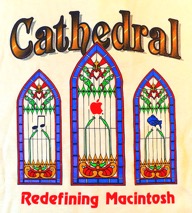A view of Lake Pend Oreille from the mountainside northwest of Sandpoint, and just west of the Airport. My home is just below this viewpoint.
Eric C. Anderson Autobiography 4
Those Glorious Apple Computer Days
Finally, after being wow’ed by Apple since 1979, here I was, actually WORKING for my favorite of all time company! At first, I was afraid they were going to fire me! After all, I was sitting at another employees desk while he was on vacation, playing around with a Mac (learning Hypercard, as it turns out). And my boss had his office right next door - and he walked by my cubical maybe 20 times a day, and what was I doing? Nothing! Well, nothing that Apple needed… So I was concerned that I was not being effective. Finally, I was brought into his office (maybe a week later - maybe 2) and offered 2 different projects: either the new Mac portable, or the Apple II video overlay card project. He suggested I talk to the project leaders, and after doing so, I choose the Apple II video overlay card (the Mac portable was very well along, and I did not think I could add much).
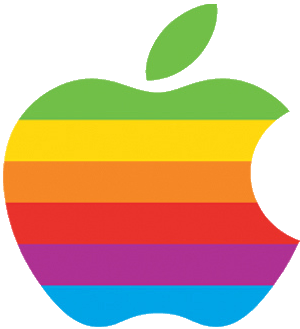

My First Apple Project
My first project at Apple was the Apple II Video Overlay Card. This was a project being run by Steve Perlman from the Advanced Technology Group (ATG), and Apple needed it transitioned to the Apple II product development group. So, I became the Project Lead for this card. It was a brilliant design by Steve, and I only got to get the project on its feet and organize it before a little crisis occurred in the Apple II group, of which I was now a part.
I have two early Apple favorite stories. The first is that I was put in temporary housing, and put on a daily allotment for food and other needs. I started collecting receipts, and tried hard to spend it all, with little success - even with expensive restaurants, boxes of See’s candies, etc. After a month, I attempted to turn in my receipts, and that is when I found "oh, you don’t need receipts, you get the money and do what you want with it." WOW. Start eating at McDonalds! We ended up with $5000 extra just from that!
My best early Apple story is when I got a call from someone at Apple, and they asked "Has your house in Florida sold yet?" And I said "no." So they asked "how much are you selling it for?" I told them, and they said "OK, we will buy it from you for that price, and the expenses for that will be $1.00." Whoa! Why are you doing this, I asked? "We want you to focus on your work, and not have to worry about selling your house! They sold it later for a $5000 loss. What an experience working for Apple was!

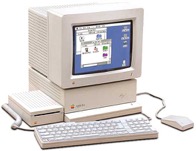
Apple IIgs Successors
The Apple IIgs was well on its way to production, and already they were working on the follow-on version. The Project Leader did a no-no on an online forum and embarrassed Apple, and had to be sidelined for 6 months. So they pulled me off the video overlay card and onto the IIgs follow-on project. One of my engineers then took over the video card. The IIgs follow-on project then had to split between a minor upgrade and a major upgrade at a later date. I took on the latter.
That project led me to focus on a multi-media rich computer upgrade of the Apple IIgs using an ARM processor to emulate the instruction set of the Apple II processor. This would greatly increase the performance, and would actually reduce the circuitry, as there were a number of support chips available for such a computer.
Apple Politics
Apple is a very exciting place, with lots of freedom to try new things, propose new ideas, and even work on them to get to a point where you can present them. That was freedom like I had at Clear Light as CTO. So, I proposed the ARM-based Apple II follow-on. What I did not (yet) understand was that - even though projects could be run fairly easily - getting them approved for product was where the real politics happened. There were fierce wars between groups and group leaders going on all the time. Projects were cancelled, then reborn, than cancelled again. My project was presented to the "Cross Functional Review Board" and my bosses boss shot it down. He could have warned me, but no, that would not be as much fun. It was a very painful experience - probably the only one at Apple.
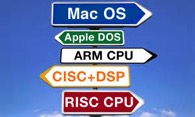
The reason given was Apple could not afford to support yet another OS. At the time I did not believe this (but now, with the FlashPoint Technology experience, I do!). Another reason given was that it threatened the Mac - it would have had a higher performance than the Mac II at the time. Of course I realized later that they did not have to support another OS - the entire emulation could be hidden. But I did not think of that at the time. It was a painful learning experience: be aware of the politics!

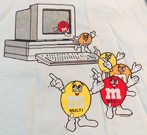
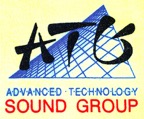
How to Convert A Dead Project into Shipping Product!
My focus was on multi-media ever since day 1 at Apple - a continuation of multi-media with slide projectors at Clear Light. So much of the work I had done on the ARM-based Apple Iix was reconfigured into a Mac multi-media subsystem. This included a DSP (Digital Signal Processor) for handling audio and more, a stereo sound chip and serial protocol, and a video chipset for doing video overlay and other video and graphics functions. We became "agnostic" about what CPU was running the show. What a success it became!
This project moved around - initially, we became the CPU Technology Multi-Media Group. Later, were were moved to ATG (Advanced Technology Group) and I became the manager for the ATG Sound Group. The DSP project became a stand-alone, as the video chips were passed over to CPU Engineering to manage and bring into production in future Macs. The DSP Project became the Cathedral Project. The various images are from various T-shirts we produced for the teams during the projects. The Cathedral Project led to the development of ARTA - Apple Real Time Architecture, which was released in 1993, and I presented it at the 1992 Microprocessor Forum. As a speaker, I received a FREE coffee cup! (Whee!) Note: This is the same event that another Apple engineer announced that RISC was the future of Apple, and DSP was not… Ah, religion…


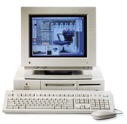

The Macintosh Qaudra 880AV and Centris 660AV, with ARTA and Cathedral
Microprocessor Forum Coffee Cup, 1992
Religious Wars Nearly Killed Apple
It is important - for historical accuracy sake - to remind the world that these two AV computers could run rings around the following year computers, based on the IBM PowerPC RISC processor. Over 90% of the main CPU was available when doing V.32 modem using Cathedral - the highest performance available at the time - while the following year, less than 10% of the CPU was available. There was a simple reason for this: Cathedral and ARTA did all the work on the AV Macs, while the PowerPC did all the work on the PowerPC Macs. It took several years for the PowerPC computers to match the performance, but HEY, they were RELIGIOUSLY PURE! They were RISC! A total failure - Apple had to revert to CISC processing from Intel about a decade later. "I told you so." Sigh. Take that, Wikipedia! :)
Cathedral Ships! And, Redefines the Mac!
The DSP Cathedral project, and it’s related ARTA, including the stereo codec and its new serial protocol plus the original 3-chip video subsystem - all became part of a new series of AV Macs. The chips included the DSP3210 from AT&T, the "Singer" Codec from ITT, and the 3-chip video set from Philips. All of these my group had worked on and perfected (or helped perfect) with the related companies, including the development of the ARTA software.
The AV Macs were shipped mid 1993. Specifically, the Quadra 880AV, and the Centris 660AV. I note that in Wikipedia, they skip over this generation of Macs in their rush to go from 68K based Macs to PowerPC based Macs. We raised the bar for Mac, the PowerPC lowered the bar for several years, and remained behind CISC, forcing Apple to switch processor families AGAIN to the Intel processor family. The "RISC Religion" that was so proudly proclaimed at the 1992 Microprocessor Forum was a bust. And, not because RISC was not a good architecture, but because money poured on something tends to make it move forward faster. It turns out that Intel uses RISC architecture to implement its instruction set, the x86 instruction set. So, the real religion, you could argue, I suppose, is instruction set hegemony. Intel had it. Frankly, the 68K and the PowerPC and ARM have/had a much nicer instruction set, but again, hegemony wins every time.
My Apple Business Card, while working at ATG on Cathedral
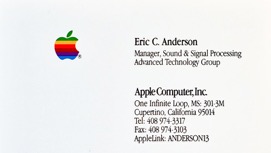
But there’s more!…
Previous Page
Next Page
Copyright © 2017 Anderson Creations. All Rights Reserved.

